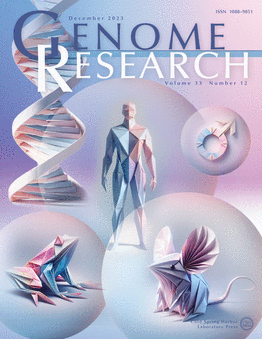空间转录组学的核边界聚类使复杂空间域的可扩展发现成为可能
IF 5.5
2区 生物学
Q1 BIOCHEMISTRY & MOLECULAR BIOLOGY
引用次数: 0
摘要
空间转录组学是一系列技术的集合,可以表征组织样本中的基因表达谱和空间信息。现有的空间转录组学数据聚类方法主要集中在数据转换技术上,以表示适合后续聚类分析的数据,通常使用现有的聚类算法。这些方法在处理具有不同密度、大小和形状的复杂数据特征(在执行聚类的转换空间中)方面存在局限性,并且它们具有很高的计算复杂性,导致聚类结果不令人满意,即使使用gpu也会导致执行时间缓慢。我们提出了一种新的聚类算法,称为核边界聚类(KBC),而不是专注于数据转换技术。它有两个独特的特点:(1)它是第一个使用分布式核来招募聚类成员的聚类算法,使得发现密度、大小和形状不同的聚类成为可能;(2)它是一种线性时间聚类算法,显著提高了聚类分析的速度,使研究人员能够有效地处理大规模的空间转录组学数据集。我们证明了:(1)KBC与一种简单的数据转换技术Weisfeiler-Lehman方案可以很好地工作,(2)KBC和Weisfeiler-Lehman方案的组合产生了良好的聚类结果,并且比许多使用现有聚类算法和数据转换技术的方法更快,更容易使用。本文章由计算机程序翻译,如有差异,请以英文原文为准。
Kernel-bounded clustering for spatial transcriptomics enables scalable discovery of complex spatial domains
Spatial transcriptomics are a collection of technologies that have enabled characterization of gene expression profiles and spatial information in tissue samples. Existing methods for clustering spatial transcriptomics data have primarily focused on data transformation techniques to represent the data suitably for subsequent clustering analysis, often using an existing clustering algorithm. These methods have limitations in handling complex data characteristics with varying densities, sizes, and shapes (in the transformed space on which clustering is performed), and they have high computational complexity, resulting in unsatisfactory clustering outcomes and slow execution time even with GPUs. Rather than focusing on data transformation techniques, we propose a new clustering algorithm called kernel-bounded clustering (KBC). It has two unique features: (1) It is the first clustering algorithm that employs a distributional kernel to recruit members of a cluster, enabling clusters of varying densities, sizes, and shapes to be discovered, and (2) it is a linear-time clustering algorithm that significantly enhances the speed of clustering analysis, enabling researchers to effectively handle large-scale spatial transcriptomics data sets. We show that (1) KBC works well with a simple data transformation technique called the Weisfeiler–Lehman scheme, and (2) a combination of KBC and the Weisfeiler–Lehman scheme produces good clustering outcomes, and it is faster and easier-to-use than many methods that employ existing clustering algorithms and data transformation techniques.
求助全文
通过发布文献求助,成功后即可免费获取论文全文。
去求助
来源期刊

Genome research
生物-生化与分子生物学
CiteScore
12.40
自引率
1.40%
发文量
140
审稿时长
6 months
期刊介绍:
Launched in 1995, Genome Research is an international, continuously published, peer-reviewed journal that focuses on research that provides novel insights into the genome biology of all organisms, including advances in genomic medicine.
Among the topics considered by the journal are genome structure and function, comparative genomics, molecular evolution, genome-scale quantitative and population genetics, proteomics, epigenomics, and systems biology. The journal also features exciting gene discoveries and reports of cutting-edge computational biology and high-throughput methodologies.
New data in these areas are published as research papers, or methods and resource reports that provide novel information on technologies or tools that will be of interest to a broad readership. Complete data sets are presented electronically on the journal''s web site where appropriate. The journal also provides Reviews, Perspectives, and Insight/Outlook articles, which present commentary on the latest advances published both here and elsewhere, placing such progress in its broader biological context.
 求助内容:
求助内容: 应助结果提醒方式:
应助结果提醒方式:


